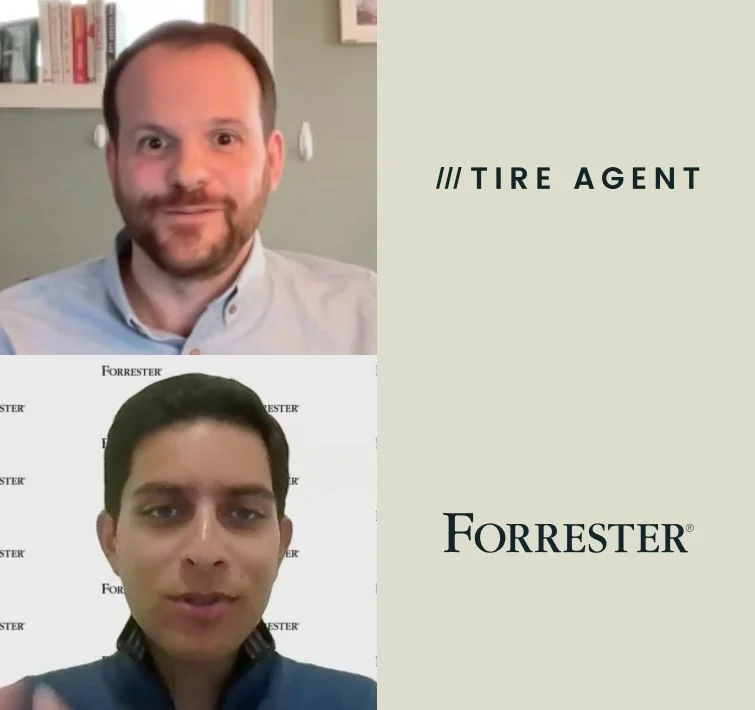Maximizing Media Impact: Highlights from Tire Agent & Forrester

Written By
Amit Kotecha

Unlock the secrets to maximizing media impact with insights from Tire Agent, Quantcast, and Forrester’s webinar on programmatic advertising measurement.
In our webinar focused on improving programmatic advertising measurement, Franni Segal, Head of Measurement at Quantcast, Kevin Parcell, Director of Marketing at Tire Agent, and Nikhil Lai, Senior Analyst at Forrester, addressed challenges in measuring the true impact of programmatic campaigns.
Here are the conversation highlights.
The Measurement Challenge in Programmatic
Modern media strategy needs to incorporate measurement. This becomes especially important for programmatic media and awareness driving media. Nikhil Lai emphasized this point by referencing findings from Forrester’s annual CMO survey, which gathered insights from over 1,000 respondents. The survey consistently ranks measurement as one of the top challenges marketers face.
Nikhil noted that many of the top marketing challenges stem from understanding the uplift on sales of upper and mid funnel media tactics. “Budget constraints are directly tied to the inability to justify data quality,” he explained. “That makes measurement really messy. Personalization and customer experience also suffer due to ineffective measurement. And year after year, this remains the top challenge for Forrester’s clients.”
One of the key challenges in measurement for Tire Agent was moving beyond simplistic performance metrics like clicks and views. Kevin Parcell explained that standard indicators—such as click-through rates and view-through conversions—often failed to capture the true value of their programmatic advertising efforts. In the past, most of their measurement partners emphasized view-throughs, a metric Tire Agent found neither reliable nor persuasive.
While geo-testing provided some directional insights, it had significant limitations, particularly in rural areas and during seasonal changes, where external variables like weather could distort results. “It was hard to justify internally. Did it work?” Kevin said. “And then, secondly, if we wanted to increase spending, we had to justify it to the CEO and the board. When it’s like that, you don’t take the risk—because you’re on the hook.”
Revealing the True Impact of Exposure
A turning point for Tire Agent came when Quantcast introduced real-time incrementality testing, moving the brand beyond its reliance on platform-reported metrics from Google and Meta to more reliable testing. This approach revealed the true impact of exposure, without solely relying on clicks, by comparing test and control groups. Franni Segal at Quantcast echoed the importance of balanced control and exposed groups and optimizing media mix throughout a campaign, based on test outcomes.
The always-on nature of this testing gave Kevin the confidence to optimize campaigns and prove lift to Tire Agent’s internal stakeholders. For example, initially, Tire Agent undervalued site visits and asked to pause those campaigns. Within the Quantcast incrementality models, they discovered that optimizing away from site visits provided a decrease in overall conversions. Kevin said, “It comes back to the issue with measurement. It's a full funnel approach, and I think that's why you need a better testing methodology; you can miss things out.”
“The funnel isn’t linear,” Nikhil reminded the audience. “The halo effect of upper funnel on consideration is real—measured best by indicators like branded search uplift rather than just conversions.”
Watch the full webinar on demand: Understanding the Impact of Your Programmatic Campaigns
Shifting Budget Based on Performance, Even in Uncertainty
One of the biggest surprises for Tire Agent was the performance of native ads. Unexpectedly, they delivered significant lift, even outperforming more established formats like display and video. With the ability to monitor performance in real time, Tire Agent quickly reallocated budget to the top-performing channels. The incrementality framework they used—supported by both Quantcast’s testing and their own internal tools—gave them measurable, defensible results. This made it easier to justify increased spend and scale campaigns with confidence.
Kevin explained: “The uncertainty right now makes things a little bit difficult. When it hits, you want to cut upper-funnel stuff and just focus on bottom-funnel. But we've been pretty strict. It's an always-on approach. If you don't do the always-on, you’ll get a sugar rush, and then it's going to drop off. We've stayed the course, and it’s been easier because we can see that it works.”
That kind of long-term thinking is essential, especially shifting budgets to where your customers are. Nikhil said, “Map out where your customers are. I guarantee that more than half of them are scattered across the open web, and programmatic is the most effective—and efficient—way to reach them. Hesitation due to measurement concerns needs to be outweighed by the fact that there are eyeballs out there. There are folks who’ve never heard of your brand before. If you can take them from a frequency of zero to one—that’s how your brand grows: through incremental reach.”
Key Takeaways:
- Don’t rely on clicks alone — Upper-funnel success requires more nuanced, non-click-based measurement.
- Use incrementality testing to build trust — Proving real impact unlocks budget and drives confident scaling.
- Be open to surprise performers — Native media outperformed expectations and delivered measurable lift.
- Keep testing always-on — Continuous measurement ensures ongoing efficiency and adaptability.
- Find your source of truth. Don’t blindly trust platform-reported data—run your own tests, analyze results, and build confidence through evidence.
- Plan for testing, and embrace optimization. Structured experimentation leads to actionable insights and better performance.
Share article
See the value of the Quantcast Advertising Platform

